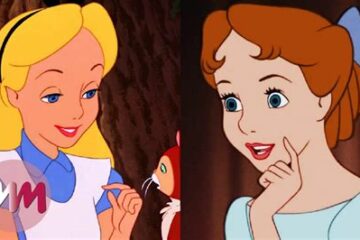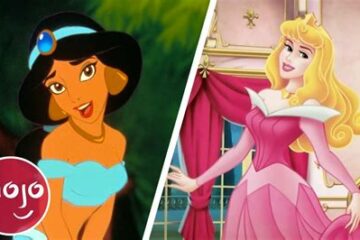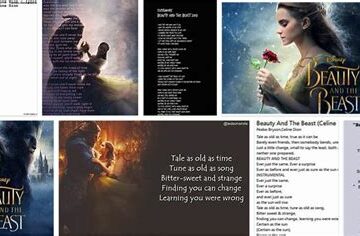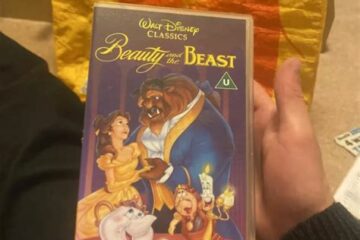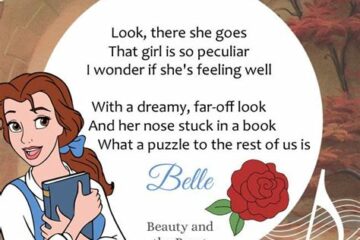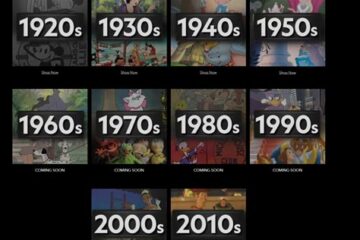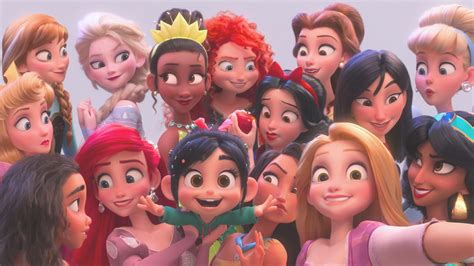
The Role Of Disney Princesses In Modern Culture
In today’s dynamic cultural landscape, Disney princesses play a pivotal role that extends far beyond the realm of animated storytelling. These iconic characters not only captivate young minds but also serve as crucial touchstones for social norms, gender roles, and diversity. As they navigate their fantastical worlds, Disney princesses shape children’s imaginations, instilling values and lessons that resonate with modern audiences. This article explores the multifaceted impact of Disney princesses, examining how they reflect and influence contemporary values, challenge traditional gender roles, and promote inclusivity. Join us on a journey to understand the lasting legacy of these beloved characters in both personal and societal contexts, revealing their significance in pop culture today.
Understanding The Role Of Disney Princesses In Children’s Imagination
Disney princesses play a significant role in shaping children’s imagination by providing them with relatable characters and captivating stories. Through engaging narratives and vibrant visuals, these princesses inspire young minds to explore creativity, empathy, and adventure.
The role of these characters goes beyond mere entertainment; they serve as tools for children to understand complex emotions and situations. For instance, stories of bravery, love, and friendship allow children to navigate their own feelings and relationships. They see qualities such as kindness, courage, and resilience modelled, encouraging them to emulate these traits in their daily lives.
Moreover, Disney princesses often find themselves in extraordinary situations, prompting children to expand their imaginative horizons. These narratives teach them that they can overcome obstacles and achieve their dreams, fostering a sense of empowerment. The enchantment of the Disney world invites children to dream big and use their imagination to create their own stories, reinforcing the idea that anything is possible.
As young viewers engage with these stories, they learn to identify with characters from various backgrounds and life experiences, which broadens their perspective and enhances their imaginative play. This process of identification not only entertains but also contributes to their social development, helping them build connections with others and creating a world rich in empathy and understanding.
The Role Of Disney Princesses In Shaping Gender Roles
Disney princesses have a significant role in influencing perceptions of gender roles among children. Traditionally, these characters were often portrayed in ways that reinforced societal norms regarding femininity and masculinity. For example, early princess films emphasized traits like beauty, gentleness, and a focus on romantic relationships, which conveyed a definition of womanhood tied to traditional expectations.
However, over the years, there has been a noticeable shift in the representation of these characters. Modern Disney princesses, such as Moana and Merida, break away from the stereotypical roles by showcasing strength, independence, and a sense of adventure. This evolution reflects a changing narrative that encourages young audiences to embrace a broader view of what it means to be female in today’s society. Children are now exposed to characters who proactively shape their own destinies instead of waiting to be saved.
Furthermore, the role of these princesses in shaping gender roles extends beyond mere representation. The messages conveyed through their stories often promote empowerment and resilience. For instance, stories focusing on self-discovery, courage, and the importance of friendship resonate deeply, teaching children valuable life lessons that transcend traditional boundaries of gender roles.
By presenting these multifaceted characters, Disney not only entertains but also instills a sense of agency in young viewers, encouraging them to pursue their dreams irrespective of societal expectations. This transformation serves as a powerful tool for shaping the next generation’s understanding of gender roles, fostering a culture where both men and women can aspire to be whoever they want to be.
Cultural Impact: How Disney Princesses Reflect Modern Values
Disney princesses are not merely characters in animated films; they play a significant role in reflecting and shaping modern values in society. Each princess comes with her unique traits, challenges, and triumphs, often mirroring the evolving perspectives on personal identity, empowerment, and societal expectations.
For example, characters like Mulan and Moana embody strength and perseverance, challenging traditional gender roles and promoting the idea that women can be leaders and warriors in their own right. These portrayals resonate with contemporary values of feminism and independence, inspiring young audiences to embrace their individuality and strength.
Moreover, Disney princesses also address themes of friendship, kindness, and compassion, aligning with modern cultural expectations of emotional intelligence and social responsibility. The emphasis on collaboration and empathy in films like Frozen showcases the importance of relationships, demonstrating that true strength lies not only in personal achievement but also in supporting one another.
As Disney continues to diversify its princess lineup, the representation of varying ethnicities, backgrounds, and experiences fosters a more inclusive narrative. This shift not only encourages acceptance but also empowers children from all walks of life to see themselves in these characters, further reflecting modern values of diversity and inclusion.
The role of Disney princesses extends beyond entertainment; they challenge traditional norms, inspire personal growth, and promote critical values that align with the ever-changing cultural landscape. Through these beloved characters, Disney encapsulates the essence of what it means to be a hero in today’s world, encouraging audiences to aspire for not just personal success but also a more compassionate society.
The Role Of Disney Princesses In Promoting Diversity And Inclusion
Disney princesses have increasingly become symbols of diversity and inclusion in modern storytelling. Historically, these characters often represented a narrow set of ideals, primarily centered around Eurocentric beauty and narratives. However, recent portrayals have significantly shifted to embrace a more global perspective, allowing children from various backgrounds to see themselves reflected on screen. This The Role of diversity in Disney’s princess lineup fosters a sense of belonging and empowerment among young audiences.
The introduction of characters such as Moana, Tiana, and Mulan into the Disney princess franchise exemplifies this commitment. These princesses do not just possess different ethnic backgrounds; their stories resonate with cultural significance and teach valuable lessons about resilience, identity, and empowerment. By portraying strong, diverse characters, Disney helps to challenge the traditional narratives that have long dominated children’s entertainment.
Moreover, the representation of ethnic diversity can facilitate meaningful conversations about culture, race, and acceptance in families. When children watch these films, they are exposed to different customs, traditions, and languages, fostering an environment of curiosity and understanding. This The Role in promoting inclusion ensures that children learn to appreciate differences in their peers, building a more harmonious society.
Additionally, Disney’s efforts to focus on inclusivity extend beyond the screen. Merchandise, theme parks, and media-oriented initiatives reflect a diverse portrayal of princesses, making them accessible and relatable to a broader audience. This comprehensive approach helps reinforce the message that everyone, regardless of their background, can aspire to be a hero in their own story, further enhancing the The Role of Disney princesses in shaping a more inclusive culture.
The Lasting Legacy: The Role Of Disney Princesses In Pop Culture
Disney Princesses have become iconic figures in modern pop culture, transcending their original roles as characters in animated films. Their influence can be observed across various media, merchandise, and even social movements. As a result, Disney Princesses serve as more than just entertainment; they symbolize ideals, aspirations, and societal values.
One notable aspect of the role of Disney Princesses in pop culture is their prevalence in fashion and merchandise. From dolls to clothing lines, these characters have generated billions in sales, showcasing their widespread appeal among audiences of all ages. The princess brand has successfully integrated into youth culture, inspiring themed parties, fashion trends, and fan art.
Moreover, the presence of Disney Princesses in social media has amplified their reach. Platforms like Instagram and TikTok feature countless fan pages, creative reinterpretations, and discussions highlighting their cultural significance. This online engagement fosters a community where fans celebrate and critique these characters, evolving their meaning over time.
Another dimension of their legacy is the increasing focus on empowerment and independence reflected in newer Disney films. Characters like Moana and Raya signify a shift towards more complex and relatable protagonists, reinforcing the importance of resilience and cultural identity. This evolution in storytelling not only captivates children’s imaginations but also resonates with changing social narratives in contemporary society.
The lasting legacy of Disney Princesses in pop culture exemplifies their ability to adapt and remain relevant. Their role in shaping trends, influencing social narratives, and fostering community engagement underscores their importance well beyond the screen, making them integral to the fabric of modern culture.
Top 10 Disney Characters You Didn’t Know About
December 30, 2024A Deep Dive Into Disney Princesses And Their Stories
December 29, 2024The Meaning Behind Beauty And Beast Lyrics
December 29, 2024Why Beauty And The Beast Is A Timeless Disney Classic
December 29, 2024Exploring The Themes In Beauty And The Beast Lyrics
December 28, 2024The Evolution Of Disney Characters Over The Decades
December 28, 2024
Leave a reply Cancel reply
Recommended
-
The Most Iconic Disney Characters And Their Catchphrases
December 26, 2024 -
Little Town Beauty And The Beast Lyrics
August 18, 2023 -
Lyrics Beauty And The Beast Céline Dion
August 17, 2023

